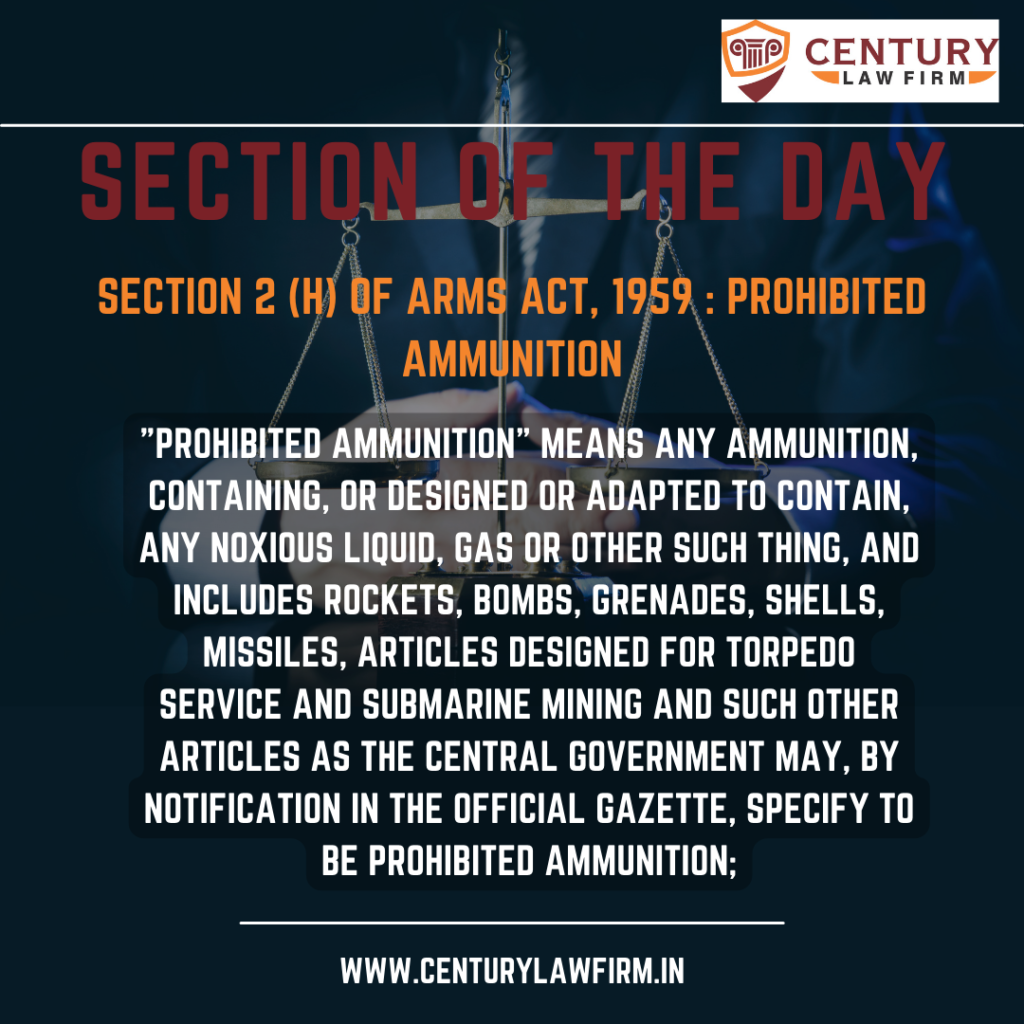Section 2 (h) of Arms Act, 1959 : Prohibited Ammunition
“prohibited ammunition” means any ammunition, containing, or designed or adapted to contain, any noxious liquid, gas or other such thing, and includes rockets, bombs, grenades, shells, missiles, articles designed for torpedo service and submarine mining and such other articles as the Central Government may, by notification in the Official Gazette, specify to be prohibited ammunition;
Overview:
Section 2 (h) of the Arms Act, 1959, provides a detailed definition of “prohibited ammunition.” As per this section, prohibited ammunition refers to any ammunition that contains or is designed or adapted to contain any noxious liquid, gas, or other such substances. This category also encompasses rockets, bombs, grenades, shells, missiles, and articles designed for torpedo service and submarine mining. Additionally, the Central Government has the authority to specify other articles as prohibited ammunition through notifications in the Official Gazette.
Key Points:
1. Broad Definition: The definition of prohibited ammunition is comprehensive, covering a wide range of weapons and ammunition that can cause significant harm or damage.
2. Central Government’s Role: The Central Government plays a pivotal role in updating and expanding the list of prohibited ammunition, ensuring that emerging threats and technologies are adequately addressed.
3. Importance in National Security: By defining and prohibiting certain types of ammunition, the Arms Act aims to safeguard national security and prevent the misuse of highly destructive weapons.
Thought-Provoking Insights:
1. Evolving Threats: With advancements in technology and weaponry, how does the Arms Act ensure that new and emerging threats are consistently addressed and prohibited?
2. Balancing Rights and Security: While the prohibition of certain ammunitions is crucial for national security, how does the Act ensure that individuals’ rights are not unduly restricted, especially in contexts like research and development?
3. International Comparisons: How does India’s approach to prohibited ammunition compare with regulations in other countries, especially those with advanced military technologies?



